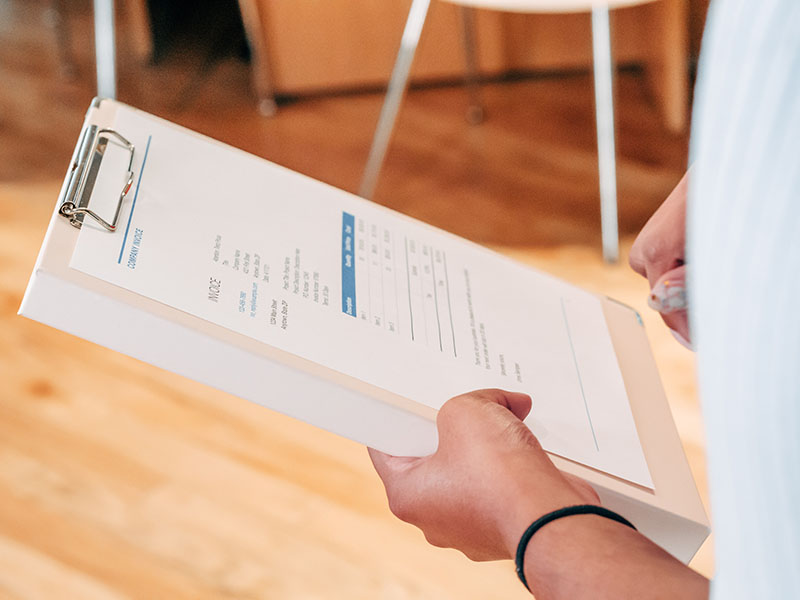The tips to spotting a fake invoice

(Kindel Media / pexels)
With new money schemes increasing at alarming rates, accounting and finance professionals should learn as much as possible about new and common scams, tell-tale signs of deceit and upgraded best practices. Armed with this knowledge, they can prevent themselves and their organizations from falling victim.
No organization is immune. Of the 450 treasury practitioners surveyed in a 2023 Association for Financial Professionals Payments Fraud and Control Survey (underwritten by JP Morgan), 65% revealed that they had been the victims of attacks or attempted payment fraud.
Moreover, the survey (the 15th of its kind) identified checking as the most typical payment means that scammers use to defraud institutions. Invoice fraud is widespread in accounts payable as checks can be faked and payment requests duplicated.
Types of invoice scams
Organizations of all sizes are at risk. Large companies coordinating with many suppliers and businesses whose employees work remotely must take extra precautions due to looser employee controls and reduced visibility.
The most common invoice scams to date include:
Copycat/third-party invoice
The most prevalent invoice scam is a fraudulent company posing as a known supplier requesting payment. On the surface, it looks like something your trusted supplier typically sends. However, the address, logo or bank account information has changed from previous invoices. Often, these invoices come with a note of urgency to entice you to pay before you’ve checked into it.
Duplicate invoices
Not to be confused with the copycat invoice, in this scenario, the vendor sends the same invoice more than once, hoping no one will be the wiser and pay automatically.
Phishing for email access
In this scheme, the fraudster gains access to your email (usually through a previous phishing scam) and watches your inbox, waiting for an opportunity to pounce. They’ll latch onto an email thread between you and a supplier/buyer and update payment information with their own account numbers, channeling payments to their bank account.
Labor mischarge
Here, a provider purposefully inflates an invoice by misrepresenting the hours worked. They might even change prices.
Substandard product/service
A vendor/supplier can deliver inferior goods or services and pocket the extra cash. Catching and proving the misrepresentation can be challenging in this scheme.
Collusion between internal and external players
We tend to focus on ways to protect ourselves from external threats. However, a 2022 survey by PWC revealed that as many as 31% of fraud attacks were perpetrated by internal employees, and 26% resulted from internal and external players working together to funnel money to an outside account for personal gain.
Fraudulent invoice indicators
Safeguarding your organization from losing money on fake invoices is easier once you know what to look for. Some common red flags include:
- The vendor’s contact information or payment address differs from their previous invoices.
- The vendor’s payment or bank account information differs from their previous invoices or does not match existing records in your ERP system.
- The invoice image (or other invoice information) doesn’t match up with the ERP data on file for the vendor.
- The invoice is for goods/services yet to be rendered.
- The volume of invoices increases without corresponding POs.
Automation and other best practices
Automation is an accounting department’s best friend, from payment controls and validation of vendor information accuracy to automatic invoice scans. It absorbs routine tasks, like scanning invoices for inconsistencies, freeing accountants up for other duties.
Businesses relying heavily on manual processes or receiving large volumes of invoices can find it challenging to identify the fake from the real—accountants can’t thoroughly inspect every invoice for questionable matters.
Automated technology can scan and detect invoices faster and more thoroughly and accurately than humans. Plus, with technology covering the job, you decrease the opportunity for a worker to manipulate data. Furthermore, it frees accountants to focus on other duties.
Ensure that an authorized individual approves high-value invoices before making payments. Automated AP controls allow invoices to automatically forward to authorizing parties for specific items or greater-than-specified sums. Input authenticated vendor information and update vendor contact information as needed, then wait to receive alerts on invoices that don’t match the contact info.
Additionally, accountants must ensure invoices have corresponding POs and GRNs (Goods Receipt Notes) to match for proof of what was ordered and received before paying a supplier. Automated software can create and hold these records for quicker confirmation.
Automation tools also assist with signing up and managing suppliers. Tech tools can help an accountant check the accuracy of vendor information during set-up or anytime a change occurs. Barring using automated tech, an accountant must cross-reference each invoice to validate a vendor’s accounts payable details. Invoice info must match previous ones or what’s on file in the ERP system.
Since check payments have inherent security weaknesses, e-payments may be the next best thing. Many e-payment platforms offer increased security and fraud protection against internal and external sources, two-factor authentication, dual approval, segregation of duties, audit trails and bank integration.
Register for the Fraud and Forensic Conference on August 29th!
